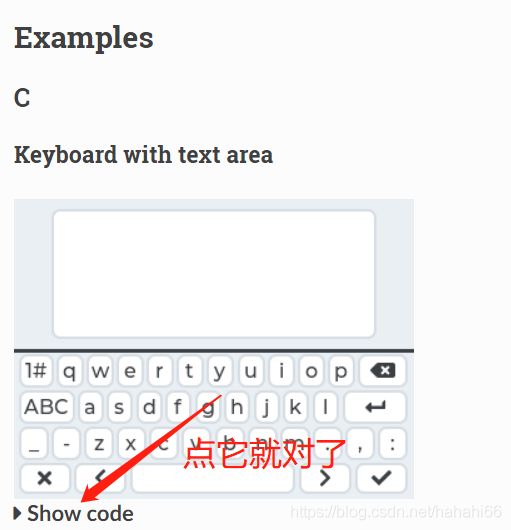基于cubemx和hal库编写的触摸键盘(lvgl组件)
基于cubemx和hal库编写的触摸键盘(lvgl组件)
文章目录
- 前言
- 一、点亮lcd
- 二、触摸屏底层
-
- 1.初始化
- 2.读入数据
- 三、移植lvgl
-
- 添加源码
- 修改源码
- 添加键盘组件
- 启动lvgl
前言
近年国赛对于人机交互的要求逐渐上升,普通的矩阵按键,串口输入未免过于普通且不灵活,所以我基于R61529液晶驱动芯片和FT6236触摸屏芯片并移植了lvgl(轻度综合图形界面库)制作了一个触摸键盘
一、点亮lcd
STM32的 FSMC外设可以用于控制扩展的外部存储器,而 MCU 对液晶屏的操作实际上就是把显示数据写入到显存中,与控制存储器非常类似,且 8080接口的通讯时序完全可以使用 FSMC外设产生,因而非常适合使用 FSMC控制液晶屏。控制 LCD 时使用的是与 NORFLASH一样的模式 B。
Address setup time in HCLK clock cycles
Data setup time in HCLK clock cycles
这俩成员设置地址和数据建立时间,它表示多少个 HCLK周期数,按我的配置,HCLK的时钟频率为168MHz,即一个 HCLK周期为 1/168微秒。这里我查了手册地址和数据建立时间最短为10ns,所以填2最合适。
接下来修改lcd.c中地址线的定义,因为我硬件上LCD的DC(寄存器/数据选择)脚接在FSMC_A16地址线,所以cube配置LCD Register Select时候选择A16,要使 FSMC_A16 地址线为高电平,实质是输出地址信号的第 16位为 1 即可,要使 FSMC_A16 地址线为低电平,实质是输出地址信号的第 16位为 0 即可,但是,以上方法计算的地址还不完全正确,STM32 内部访问地址时使用的是内部 HADDR 总线,它是需要转换到外部存储器的内部 AHB 地址线,它是字节地址(8 位), 而存储器访问不都是按字节访问,因此接到存储器的地址线依存储器的数据宽度有所不同,在本工程中使用的是 16位的数据访问方式,所以HADDR 与 FSMC_A的地址线连接关系会左移一位。

二、触摸屏底层
1.初始化
代码如下:
u8 FT6236_Init(void)
{
u8 temp[2];
HAL_Delay (500);
temp[0]=0;
FT6236_WR_Reg(FT_DEVIDE_MODE,temp,1); //进入正常操作模式
FT6236_WR_Reg(FT_ID_G_MODE,temp,1); //查询模式
temp[0]=22; //触摸有效值,22,越小越灵敏
FT6236_WR_Reg(FT_ID_G_THGROUP,temp,1); //设置触摸有效值
temp[0]=12; //激活周期,不能小于12,最大14
FT6236_WR_Reg(FT_ID_G_PERIODACTIVE,temp,1);
//读取版本号,参考值:0x3003
FT6236_RD_Reg(FT_ID_G_LIB_VERSION,temp,2);
// if(temp[0]==0X30&&temp[1]==0X03)//版本:0X3003
// {
printf("CTP ID:%x\r\n",((u16)temp[0]<<8)+temp[1]);
return 0;
// }
}
2.读入数据
代码如下(示例):
//扫描触摸屏(采用查询方式)
//mode:0,正常扫描.
//返回值:当前触屏状态.
//0,触屏无触摸;1,触屏有触摸
u8 FT6236_Scan(u8 mode)
{
u8 buf[4];
u8 i=0;
u8 res=0;
u8 temp;
static u8 t=0;//控制查询间隔,从而降低CPU占用率
t++;
// if((t%10)==0||t<10)//空闲时,每进入10次CTP_Scan函数才检测1次,从而节省CPU使用率
// {
FT6236_RD_Reg(FT_REG_NUM_FINGER,&mode,1);//读取触摸点的状态
if((mode&0XF)&&((mode&0XF)<6))
{
temp=0XFF<<(mode&0XF);//将点的个数转换为1的位数,匹配tp_dev.sta定义
tp_dev.sta=(~temp)|TP_PRES_DOWN|TP_CATH_PRES;
for(i=0;i<5;i++)
{
if(tp_dev.sta&(1<<i)) //触摸有效?
{
FT6236_RD_Reg(FT6236_TPX_TBL[i],buf,4); //读取XY坐标值
tp_dev.x[i]=319-(((u16)(buf[0]&0X0F)<<8)+buf[1]);
tp_dev.y[i]=479-(((u16)(buf[2]&0X0F)<<8)+buf[3]);
if((buf[0]&0XF0)!=0X80)tp_dev.x[i]=tp_dev.y[i]=0;//必须是contact事件,才认为有效
}
}
res=1;
if(tp_dev.x[0]==0 && tp_dev.y[0]==0)mode=0; //读到的数据都是0,则忽略此次数据
t=0; //触发一次,则会最少连续监测10次,从而提高命中率
// }
}
if((mode&0X1F)==0)//无触摸点按下
{
if(tp_dev.sta&TP_PRES_DOWN) //之前是被按下的
{
tp_dev.sta&=~(1<<7); //标记按键松开
}else //之前就没有被按下
{
tp_dev.x[0]=0xffff;
tp_dev.y[0]=0xffff;
tp_dev.sta&=0XE0; //清除点有效标记
}
}
if(t>240)t=10;//重新从10开始计数
return res;
}
要移植到lvgl所以注释了节省CPU使用率的代码,因为lvgl本身不会一直读取触摸屏状态。
三、移植lvgl
参考https://blog.csdn.net/qq_26106317/article/details/109666444?spm=1001.2014.3001.5501
添加源码
首先去LVGL的github页 下载源码。
把其中 lv_conf_template.h 文件名改为 lv_conf.h 并移动到上级目录。lvgl/examples/里的 porting文件夹里面带template的文件重命名把template去掉
GUI_core :源码,所有源码都在项目根目录的src文件夹里,自行添加即可。(比较多,不列出来)
GUI_drv :port文件,对接API的地方,在 lvgl/examples/porting/中
GUI_app:用户文件,放你自己的东西,我放了lvgl头文件和配置文件,方便编辑。
修改源码
在port文件中把“#if 0”改为“#if 1”
lv_conf.h中定义屏幕大小

startup_stm32f407xx.s中调大栈大小

接下来在lv_port_disp_templ.c中修改显示接口函数
lv_port_disp_init函数里面有三种缓冲方式,注释掉其中两个,越下面的缓冲空间越大
disp_init中添加lcd初始化
/**********************
* STATIC FUNCTIONS
**********************/
/* Initialize your display and the required peripherals. */
static void disp_init(void)
{
/*You code here*/
Lcd_Init();
}
disp_flush中添加画点代码
/* Flush the content of the internal buffer the specific area on the display
* You can use DMA or any hardware acceleration to do this operation in the background but
* 'lv_disp_flush_ready()' has to be called when finished. */
static void disp_flush(lv_disp_drv_t * disp_drv, const lv_area_t * area, lv_color_t * color_p)
{
/*The most simple case (but also the slowest) to put all pixels to the screen one-by-one*/
int32_t x;
int32_t y;
BlockWrite ( area->x1, area->x2, area->y1, area->y2 );
for(y = area->y1; y <= area->y2; y++) {
for(x = area->x1; x <= area->x2; x++)
Lcd_ColorBox(x,y,1,1,color_p->full );
/* Put a pixel to the display. For example: */
/* put_px(x, y, *color_p)*/
color_p++;
}
}
/* IMPORTANT!!!
* Inform the graphics library that you are ready with the flushing*/
lv_disp_flush_ready(disp_drv);
}
接下来在lv_port_indev_templ.c修改触摸屏接口函数
/**********************
* STATIC FUNCTIONS
**********************/
/*------------------
* Touchpad
* -----------------*/
/*Initialize your touchpad*/
static void touchpad_init(void)
{
/*Your code comes here*/
tp_dev.init();
}
/* Will be called by the library to read the touchpad */
static bool touchpad_read(lv_indev_drv_t * indev_drv, lv_indev_data_t * data)
{
static lv_coord_t last_x = 0;
static lv_coord_t last_y = 0;
/*Save the pressed coordinates and the state*/
if(touchpad_is_pressed()) {
touchpad_get_xy(&last_x, &last_y);
data->state = LV_INDEV_STATE_PR;
} else {
data->state = LV_INDEV_STATE_REL;
}
/*Set the last pressed coordinates*/
data->point.x = last_x;
data->point.y = last_y;
/*Return `false` because we are not buffering and no more data to read*/
return false;
}
/*Return true is the touchpad is pressed*/
static bool touchpad_is_pressed(void)
{
/*Your code comes here*/
if (tp_dev.scan(0)==1) return true;
return false;
}
/*Get the x and y coordinates if the touchpad is pressed*/
static void touchpad_get_xy(lv_coord_t * x, lv_coord_t * y)
{
/*Your code comes here*/
(*x) = tp_dev.x[0];
(*y) = tp_dev.y[0];
}
添加键盘组件
到官网CV一波

新建一个app.c文件放复制来的代码,记得包含"lv_port_disp.h"
启动lvgl
main函数while循环前添加初始化代码
lv_init(); //lvgl 系统初始化
lv_port_disp_init();
lv_port_indev_init();
lv_ex_keyboard_1();
给系统一个“心跳”:可以在while循环里面延时tick毫秒后执行也可以在定时器中断函数里面执行这两行代码
lv_tick_inc (tick);
lv_task_handler ();
其中的tick单位是毫秒,用来控制屏幕刷新读取触摸坐标的间隔
好像就是这些了,第一篇博客,多多指教。
附上源码链接

